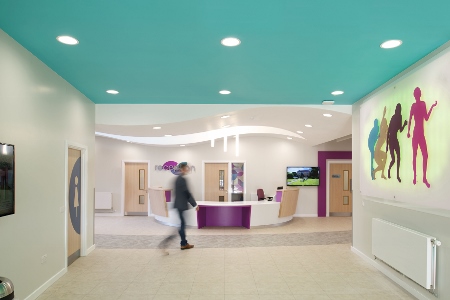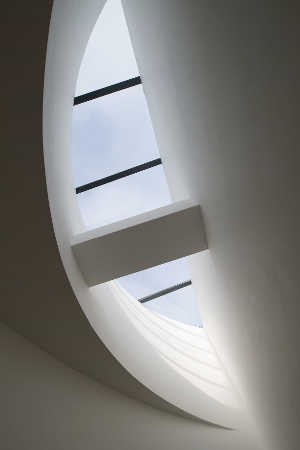Greater Manchester West Mental Health NHS Foundation Trust (GMW) has set a new benchmark in delivering mental health services with the opening of its ‘Recovery Academy’, a public-facing building that will bring patients and organisational staff together under one roof.
Rather than being housed miles away from where services are being delivered, the trust has chosen to locate its headquarters in The Curve, a new mental health ‘Recovery Academy’ on the site of Prestwich Hospital.
Designed by Gilling Dod Architects as part of a masterplanning exercise covering the wider hospital site, the £4.5m development was completed earlier this year, with Vinci as the main contractor.
The over-arching aim of The Curve is to provide everyone - service users, families and carers, as well as professionals - with the learning opportunities they need to be able to manage/promote recovery, health and wellbeing
Named by service users, the new building embodies the learning ‘curve’ taking place in society with regards to mental health awareness and the recovery journey patients embark on.
It houses community support services for people with mental health conditions, and will be the new home of the trust, with back-office services operating from the second floor.
Gilling Dod director, Andrew Arnold, said: “One of the key outcomes from the Department of Health’s 2011 Mental Health Strategy was to enable people to gain a greater ability to manage their own lives.
“The Centre for Mental Health and NHS Confederation Mental Health Network argue that a Recovery Academy is central to driving recovery-focused organisational change because it uses an educational paradigm to complement traditional treatment approaches. Therefore, the over-arching aim of The Curve is to provide everyone - service users, families and carers, as well as professionals - with the learning opportunities they need to be able to manage/promote recovery, health and wellbeing. This building offers a home for these services alongside the trust’s main headquarters building.”
Light and airy
The design ethos borrows learnings from other sectors, namely education and visitor centre precedents, rather than being overtly clinical.
Intentionally modern-looking, it is sited opposite one of the trust’s old Victorian office buildings, giving the architecture some impact.
Facilities inside the building include a 100-person lecture theatre, four large seminar rooms, three break-out rooms, a learning library, café, exhibition space, and support areas.
There are three entrances in total, all of which arrive at the main reception and greeting point in the heart of the building. Once inside, the interior has been designed to be welcoming and all internal spaces are light and airy.
Sight lines through the main atrium space mean the building relates to the public and staff approaching from either side and creates a feeling of openness, transparency and trust.
The interior design was developed alongside service users, families and staff and includes contemporary artworks created by the award-winning artist, Gerry Halpin MBE in conjunction with patients.
Inside, the building is broken into three blocks, the central circulation area being the most transparent and offering visual links to each destination. The other two blocks are arranged around this and the layout is intentionally simple and understandable. One block is single storey and the other is double height, moving from downstairs therapy and education areas upstairs to the administration offices upstairs.

Public-facing
Arnold said: “The old trust headquarters were rundown and old. They wanted a community-facing building that would provide mental health services, but would also be the trust’s public face. The new building also freed up other areas of the site for future development.
The trust has quite bravely put itself right in the middle of what is going on and as a result the overall design of the building is less clinical than you would usually see in buildings of this type
“The trust has quite bravely put itself right in the middle of what is going on and as a result the overall design of the building is less clinical than you would usually see in buildings of this type. It is more like a terminal building, with a big atrium, a reception in the centre, and fluid spaces you can walk right through.
“The fact it faces a big Tesco store also puts it, unusually, in the heart of the local community.”
Andy Morris, the trust’s head of capital, added: “The Curve reflects the recovery principles in all aspects of its culture and operation. The physical environment portrays messages of hope, empowerment, possibility, and aspirations.”






